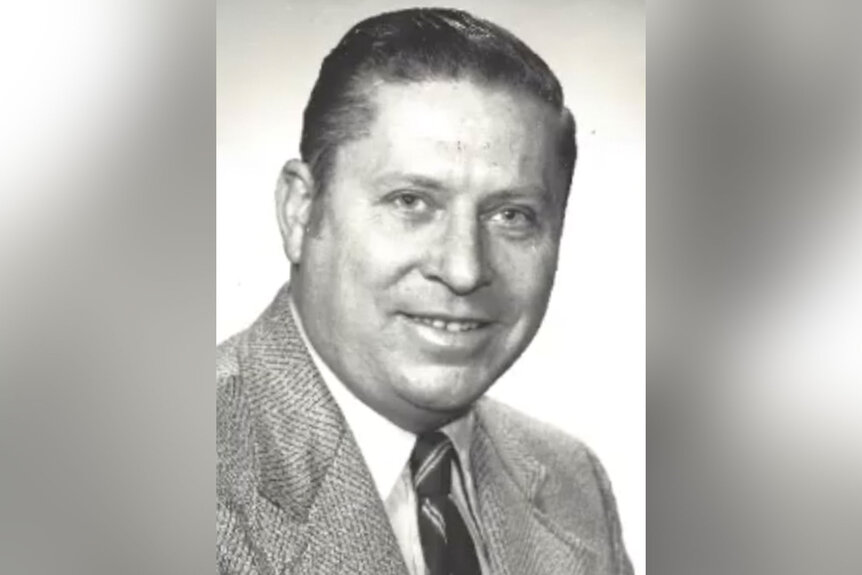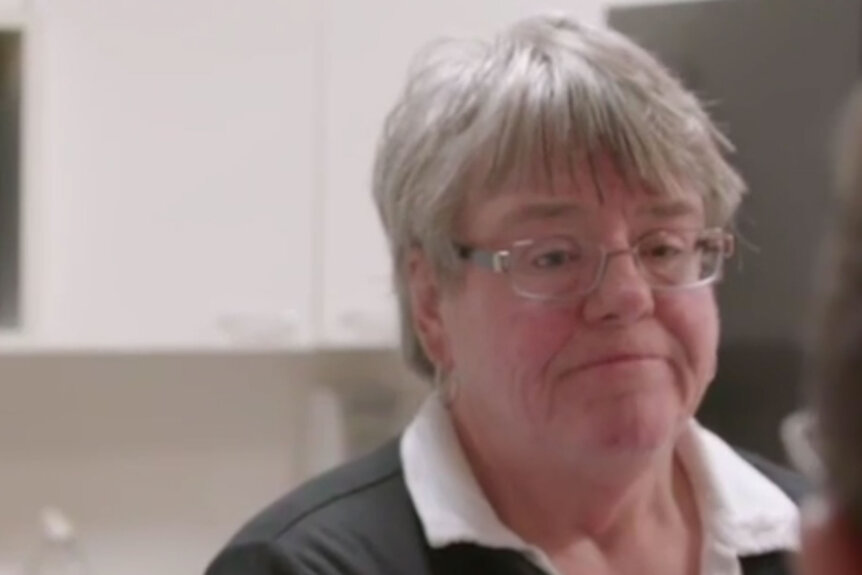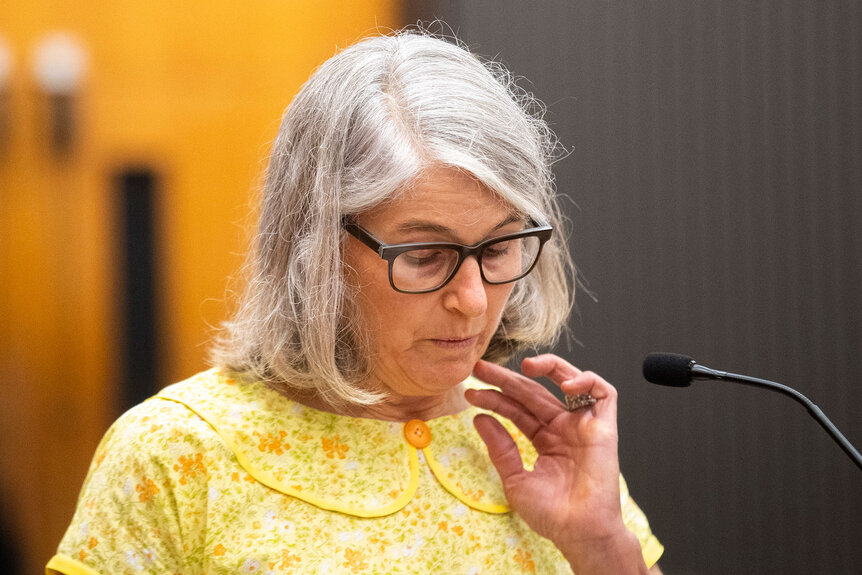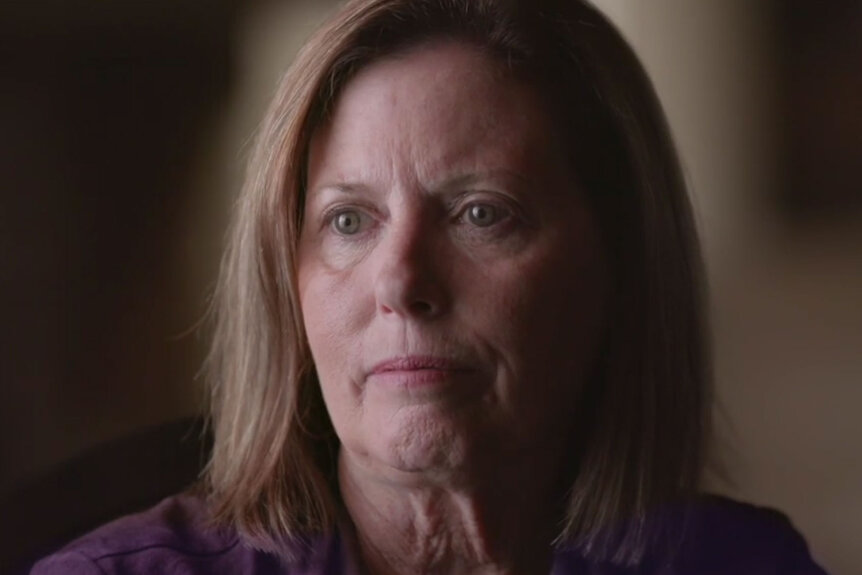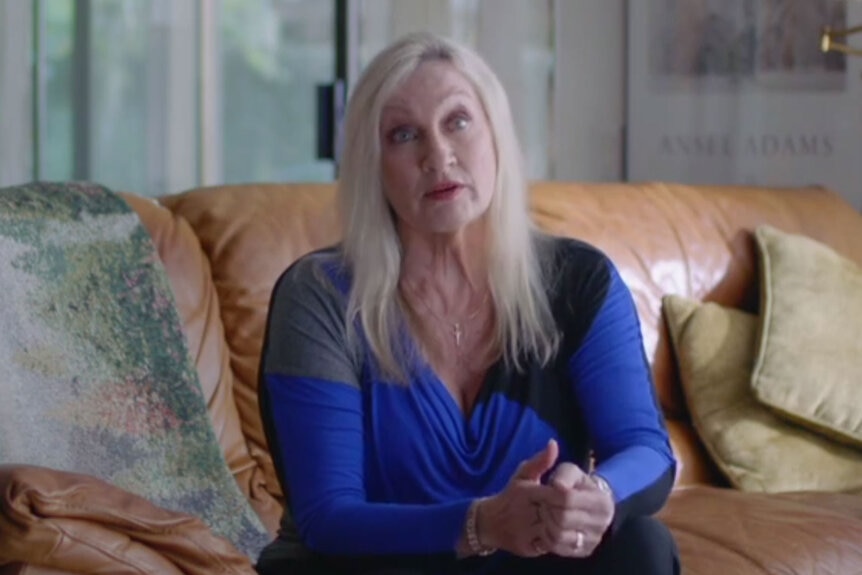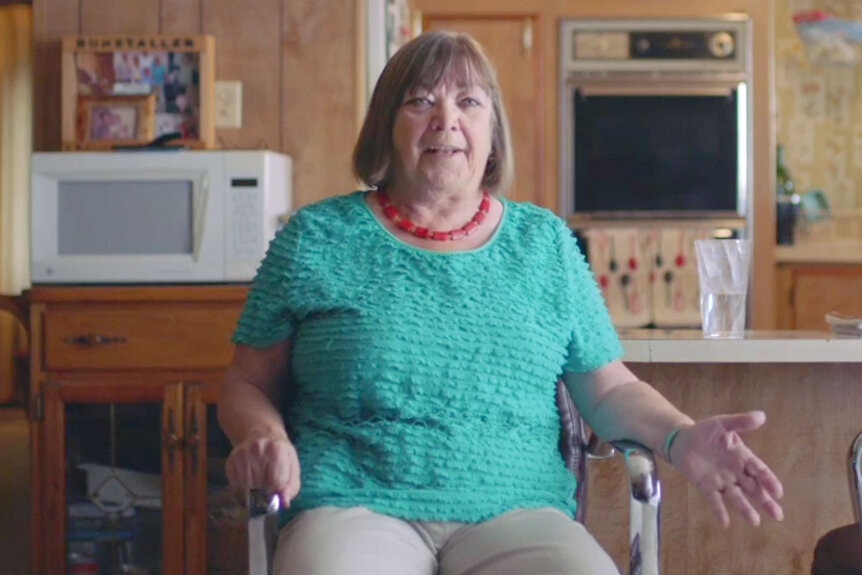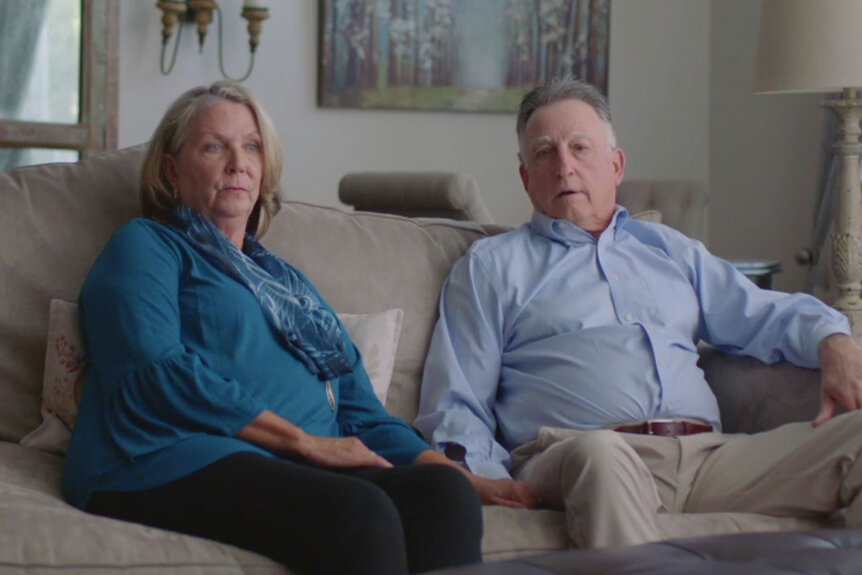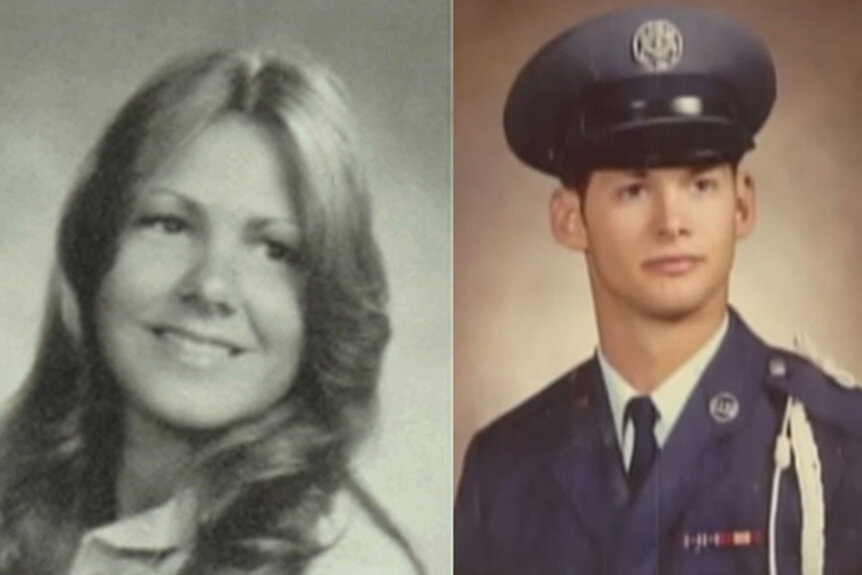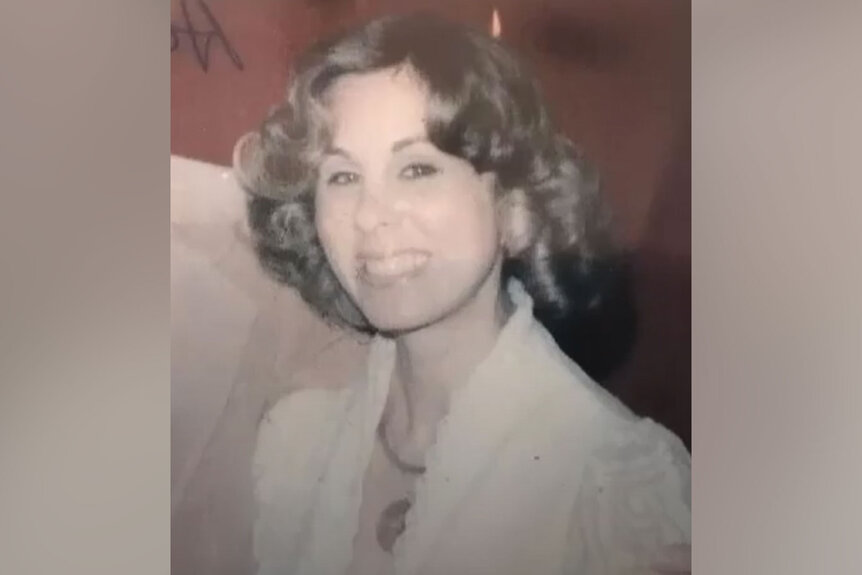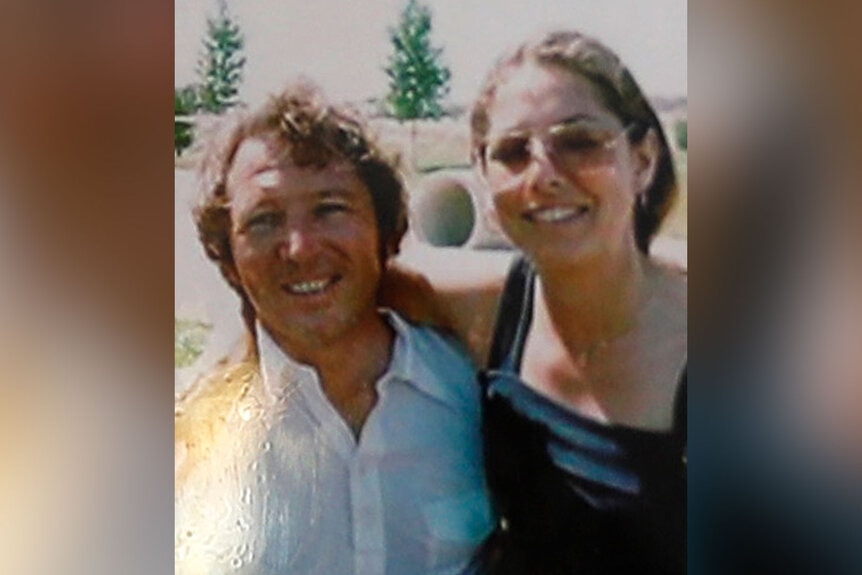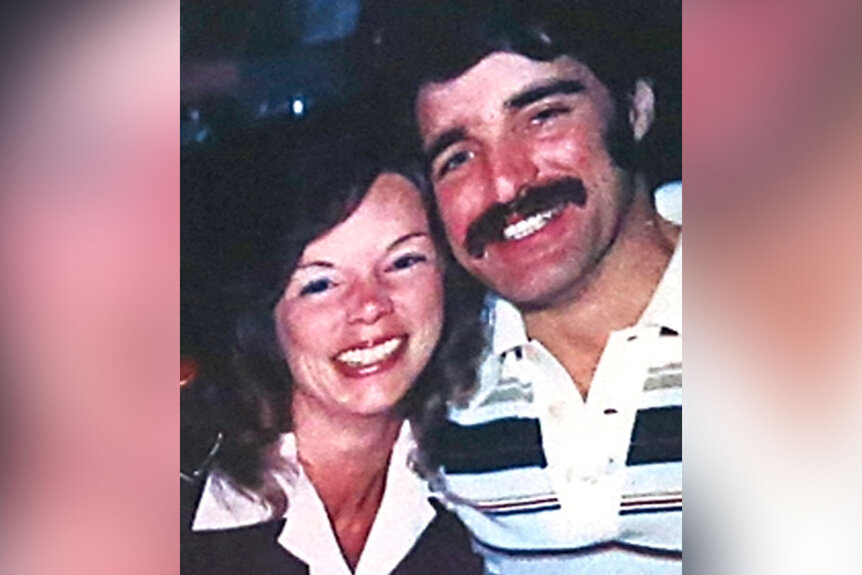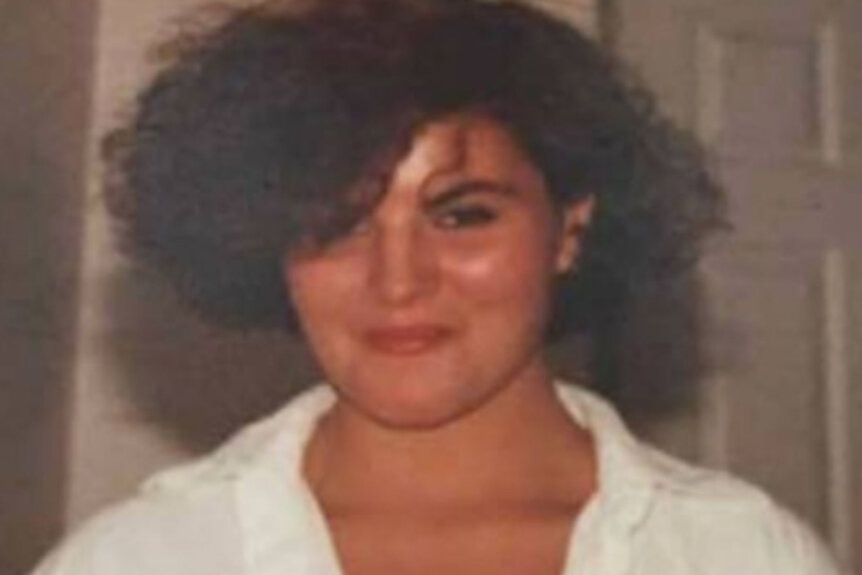Create a free profile to get unlimited access to exclusive videos, breaking news, sweepstakes, and more!
'This Is Not Our Secret Anymore': Who Were The Victims And Survivors Of The Golden State Killer?
"You have to do something with this horrible crime that's been committed against you — you can't let it destroy your life," a survivor said of moving past the Golden State Killer.
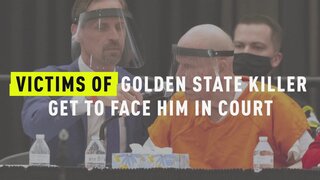
The Golden State Killer victimized dozens and dozens of people and terrorized multiple California communities during his long and vicious crime spree.
Joseph James DeAngelo's crimes were attributed to several shadowy figures — the Golden State Killer, the East Area Rapist, Original Night Stalker, and the Visalia Ransacker — over the past few decades, and it was only recently that investigators realized he was behind all the sprees. His true identity wasn't unveiled until 2018 when genetic analysis pointed to the now-74-year-old former police officer as the main suspect.
He has since admitted responsibility for 13 murders, almost 50 rapes, and dozens of home invasions between 1975 and 1986. In doing so, DeAngelo has dodged the death penalty. He's expected to be sentenced to life behind bars without parole Friday, following three days of victim impact statements.
It isn't just the sheer quantity of victims in this case that is shocking. It is also the gravity of the crimes. Not only did DeAngelo rape and murder, but he’d often target couples and families and break into their homes, tying up and psychologically torturing the men and children while raping the women. While attacking people, he'd calmly raid their fridge and steal their most prized possessions and then torment them with follow-up prank calls for years.
The victim impact statements are a way for all the victims to be honored, a time for them to finally have their say. Relatives of victims as well as survivors are expected to speak directly to the man who terrorized them starting Tuesday. Many of the surviving victims of the Golden State Killer — as well as their relatives and the relatives of those who were murdered by him — have bonded over the heinous experiences that they share.
Crime writer Michelle McNamara, who penned a book about the serial killer called "I'll Be Gone In The Dark," and other citizen detectives have been credited with shining a light on the case and helping investigators track down DeAngelo. Getting the case into the light has also given some survivors the courage to speak out about what happened to them and to find those who have been through the same trauma.
In the finale of HBO’s docuseries “I’ll Be Gone in the Dark,” based off McNamara's book, Kris Pedretti — who became the killer’s 10th rape victim at age 15 — explained that she and other victims have become “very unified.”
“We bonded,” Pedretti said.
More than 100 survivors and relatives of Golden State Killer murder victims talk regularly in a private Facebook group, KCRA reported. In spite of sharing terrible experiences, McNamara's husband, comedian Patton Oswalt, noted they are radiant, compassionate, and funny.
He met some of the victims and survivors in Sacramento, a meeting which was shown in “I’ll be Gone in the Dark." He told the show that he was moved by their resilience.
“They had every right to become horrible monsters like Joseph DeAngelo and they didn't,” he said. “So them, and the way that they’re living, is such a f--k you to him. Like, you tried to bring the same damage to us that forever warped you and it didn’t work and we’ve proved that you could have chosen to overcome this and that’s why you can’t look at us.”
DeAngelo's crime spree left behind a trail of bodies and dozens of survivors who are still marked by their encounters with the serial rapist/killer. With McNamara's book, the release of the docuseries, and the Golden State Killer's capture, the stories of these victims, both living and dead, are being told. Oxygen.com has compiled all the murder victims attributed to DeAngelo as well as all the survivors who have spoken openly about their encounters that have become a key part of the Golden State Killer saga.
Claude and Elizabeth Snelling
Claude Snelling was DeAngelo's first murder victim. It was committed during his Visalia Ransacker phase, when DeAngelo burglarized about 100 homes in the city of Visalia in 1974 and 1975.
After 1975, the killings now attributed to the Golden State Killer were attributed to the alternating monikers of the East Area Rapist and the Original Night Stalker. It took officials decades to link the violent campaigns to one another.
He broke into the Snelling home on Sept. 11, 1975. Snelling's daughter Elizabeth Snelling (now Snelling-Hupp) who was only 16 at the time, believed that the masked suspect tried to abduct her during the break-in, as she told Oxygen's "Golden State Killer: Main Suspect."
"I woke up to a man laying on top of me with a ski mask on," Snelling-Hupp said. "And I was very groggy at first, and I was thinking that it was maybe one of my younger brothers. Then when I heard his voice, it was kind of this low, whispery growl, and he said to not scream or he would stab me to death."
She said the attacker told her that she was going to go with him.
"He led me out of the house and he told me to shut up or he would kill me," she recalled. "That's when I looked in the house and I saw my dad had come through the kitchen."
Claude Snelling, a journalism professor, then let out a roar and charged toward his daughter's abductor, she said. DeAngelo pushed Snelling-Hupp to the ground before shooting her father twice. He died trying to protect his daughter.
"And then the guy pointed the gun at me, and I just was crouched in a ball and put my head down and just knew it was going to be over. And instead, he started hitting me in the head with the gun and kicking me, and then he took off running," Snelling-Hupp told "Golden State Killer: Main Suspect."
Because investigators did not link Snelling's attack to the string of other murders until 2018, this attack has not been included in most lists of DeAngelo's crimes.
Phyllis Henneman
Phyllis Henneman, 22, was attacked by DeAngelo on June 18, 1976 in her Sacramento home. Her attack is widely considered to be the first rape attributed to the "East Area Rapist," according to the Los Angeles Times. This was an alternate name for the Golden State Killer before the more famous moniker was coined.
Henneman’s mother had died just 18 months before the attack and her dad was out of town when DeAngelo broke into the home, Henneman said in a victim impact statement read aloud by her sister Karen Veilleux.
Henneman is referred to as "Sheila" in McNamara's book. She awoke to find DeAngelo in her bedroom doorway wearing a ski mask.
He jumped onto her bed and pressed the blade of a four-inch knife against her right temple, which resulted in a small cut near her eyebrow, before tying her up with cord he brought as well as a fabric belt he found in her closet. He then stuffed a white nylon slip into her mouth as a gag, raped her, and then rummaged through her house as she remained tied up.
After DeAngelo left, Henneman managed to call for help with her hands still tied behind her back. Her hands were tied so tight that she felt like she was losing circulation, McNamara wrote. She had to knock the phone from a nightstand to the ground and search around for 0 to call the operator and be transferred to police. She made sure to tell police that her attacker was wearing a "strange" mask, which was very fitted and white.
In her victim impact statement, Henneman noted that before the attack she was “happy and carefree.”
“Life, as I knew it, irrevocably changed that day,” she stated. “That once happy girl became fearful, suspicious, hypervigilant. My sense of safety was shattered.”
Henneman told the Los Angeles Times that she was fine with DeAngelo’s guilty plea and expected life sentence, as long as victims who had questions about their attacks could get the answers that they needed from him.
“I am not so sure there is anything I would ask for myself,” she said. “He would probably not be truthful anyway.”
Paul Haynes, McNamara's research assistant and co-executive producer of "I'll Be Gone In The Dark, who met Henneman once or twice, told Oxygen.com that she seems to be a "sweet-natured person who understandably, like many of the other victims whom we haven't heard from, has been reserved about entering the public eye."
He commended her bravery, as well.
"I think she's shown tremendous courage just by showing up, standing alongside her fellow survivors, and facing her attacker in court hearings," he added.
Jane Carson-Sandler
Jane Carson-Sandler was assaulted at age 30 when DeAngelo broke into her Citrus Heights home in 1976. She and her 3-year-old son were in bed — her husband had just left for work — when DeAngelo broke in and shone a flashlight in their faces, she told ABC News in 2018. DeAngelo was wearing a ski mask and holding a butcher knife. He tied up both Carson-Sandler, who at this point was studying to be a nurse, and her son with shoelaces. He raped her as her son remained tied up.
After DeAngelo left the home — but not before throwing pots and pans around the kitchen — she managed to pull her blindfold off. She then brought her child to the neighbor's house where she called the police.
For years, Carson-Sandler “carried a backpack of feelings of revenge, of hate, of course of guilt, of shame, of anger for a long time,” she told ABC News in 2018.
“But I no longer carry that. I had to come to a point in my life where I finally forgave him, and at that time I was able to get rid of that backpack. It was holding me down for so long."
She became one of the first Golden State Killer victims to publicly identify herself as such. It was important for her to turn her “pain into power” to help and empower other victims, she explained to ABC News. She was interviewed on Investigation Discovery Channel’s show “Dark Minds” in 2013. She even wrote about her harrowing experience in a book entitled "Frozen in Fear: A True Story of Surviving the Shadows of Death." She identifies herself as the Golden State Killer's fifth victim in her Twitter bio.
"You have to do something with this horrible crime that's been committed against you — you can't let it destroy your life," Carson-Sandler told ABC News in 2018. "Life is too beautiful. Life is too good. Life is too precious. So you've got to move on, reach out, help other women that have been through something similar."
Carson Sandler was present for DeAngelo's plea hearing, wearing a bright orange shirt that said “victim, survivor, thriver,” as a prosecutor began reading the details from her rape aloud, the San Francisco Gate reported. She had hoped he would look at her, but he never met her gaze.
She also gave a visible thumbs-up after the makeshift courtroom broke into laughter when a prosecutor noted that most of DeAngelo’s victims said he had a "small penis."
Victim 9
While the victim, often referred to as Victim 9, in this attack never came forward, a phrase DeAngelo muttered to her became the title of McNamara’s book. DeAngelo broke into this young girl’s Sacramento house when she was home alone and made "in the dark" references twice. One of the references became the ending of an open letter McNamara wrote to the killer, warning him that his days of freedom were limited. McNamara’s book also ends on what he told her:
“You’ll be silent forever, and I’ll be gone in the dark.”
While her exact age has not been revealed, retired Contra Costa County detective Larry Crompton points out in the docuseries that six of the first 10 victims were only teenagers. Two of those teens were just 15.
Peggy Frink
Two sisters were attacked at their Sacramento County home on July 17, 1976.
One of them, Peggy Frink, came forward in August 2020 and delivered a victim impact statement, explaining that she was just 15 when the serial killer broke into their home and tied both her and her 16-year-old sister Sue up. (Sue’s full name wasn’t revealed). She said they were bound so tightly their hands remained numb for months and DeAngelo beat her in the head so badly that it was difficult to brush her hair for a while afterward.
Frink said that DeAngelo repeatedly raped her that night.
“My God, we were just high school kids living a normal life,” she said.
Frink noted that even 44 years later, she still doesn’t feel safe and remains hypervigilant.
Kris Pedretti
On December 18, 1976, DeAngelo assaulted high school student Kris Pedretti, then 15, while she was alone in her family’s house. Her parents were at a Christmas party and her sister was at work. She was playing the piano when DeAngelo broke into the house and put a knife to her throat.
Just like with the victim before her, DeAngelo referenced “the dark.” He said, “Get moving, if you say anything or flinch, I’ll push the knife all the way in and I will be gone in the dark of the night,” according to a police report provided to Oxygen.com by Pedretti.
These bizarre statements, which cold case investigator Paul Holes, who worked on the Golden State Killer case, told Oxygen.com he believed were likely ripped from a "True Detective" magazine, helped shape the title of both the HBO series and McNamara’s book on the case.
After threatening Pedretti at knifepoint, he took her out to the backyard to a picnic bench. He cut her clothing off and sexually assaulted her. Pedretti said he’d bring her inside, rape her, and then bring her back outside, before bringing her back inside twice more to assault her again.
“It was just a few hours, but it changed everything,” she said.
Pedretti explained feeling numb to the incident at the time. She stopped playing piano because she associated it with being attacked. While still a teen, her dad overheard her telling a friend what happened to her and she got in trouble for doing so.
“I think at that moment, that would probably be the beginning feeling of shame,” she explained in the docuseries. She said she couldn’t believe it when other victims began coming forward in public decades later; she had to join them.
Pedretti has been very vocal since 2018, and was present along with other survivors at DeAngelo’s plea hearing. She credits a private Facebook group, which formed following DeAngelo’s arrest, for helping her through her ordeal.
“This isn’t our shame. This is not our secret anymore. And, the more that we talk, the more that we reinforce each other’s worth, we’ve gone through some pretty unique and terrible journeys, but we’re here now — and, I think that we’re really solid,” Pedretti told KCRA in June. “I don’t know where I would be without them, to be honest with you. There’s no way I could have handled this all by myself.”
Winnie Schultze
The Golden State Killer broke into the Sacramento home of Winnie Schultze and her family on Oct. 18, 1976 as they slept.
He tied her son Pete Schultze to his bedpost until his hands turned blue and locked her daughter in her room, Pete said during the victim impact statement segment of DeAngelo’s sentencing.
Pete said that DeAngelo “performed horrific acts against my mother” while she was bound and blindfolded. She, like many other survivors, was raped.
“We are the family of Winnie Schultze and we have all survived because of her bravery and resolve to do whatever it took to save herself and her family,” Pete said in his statement.
He added that Winnie has been living in fear of DeAngelo for more than four decades.
“When I called her to tell her that they had gotten this person, it was probably the first night in 44 years that she slept,” he said.
Linda O'Dell
Linda O’Dell and her husband had taken precautions to ward off the East Area Rapist, who at the time was all over the news. They bought deadbolts for the doors and reinforcements for their Citrus Heights house. However, O’Dell noted that DeAngelo had already clearly cased the place. He learned the particular way of how to get into a back window, which he opened and entered on May 14, 1977. O’Dell was 22 at the time.
She said she woke up to a flashlight in her face, held by a man in a ski mask who was mumbling, “I have a gun.”
“Before I knew it, he threw some ties at me and he says, 'Tie your husband up,'” she noted in the docuseries.
She hogtied her husband on command, but not tightly, and then DeAngelo hogtied her before re-tying her husband. She remembers thinking it would likely be a robbery after he initially tied them up and began wandering around their home, which they just purchased a few months prior, she told ABC 10 in 2018.
“He’s just walking around the house like he owns it,” she said in “I’ll Be Gone in the Dark.” “I could hear him opening the refrigerator. He gets a beer and he’s drinking a beer. He grabs dishes, he grabs plates and bowls and puts them on my husband’s back.”
But soon, O'Dell realized he was there for more sinister reasons. DeAngelo threatened to the couple that if he heard any of the dishware moving he would cut her husband’s ear off. He put a blindfold over her and raped her with a knife to her throat.
After DeAngelo left, O’Dell managed to get help while her husband was still tied up and she was partially tied up. She managed to get out the sliding door so she could run to a neighbor's home for help.
O’Dell said in the docuseries that her husband “didn’t want to talk about it, to be honest. I know that he cared and he felt terrible but I don't’ think he wanted to relive it either [...] I don’t think a lot of men knew how to deal with it."
O’Dell said she felt shame over the incident for some time.
“Did I wear something?” she recalled thinking in the docuseries, as she blamed herself in the years following her harrowing assault. “How did he pick me out?”
She began sharing her story in 2018 in hopes that she could encourage survivors to empower other women, she explained in a 2018 ABC 10 piece.
Fiona and Phillip Williams
Fiona Williams and her husband Phillip — though it's hinted that these are pseudonyms to protect the couple's identity — were in their bedroom on May 27, 1977 after Phillip returned home from his job at a water treatment plant when they heard a scratching sound, she recalled in “I’ll Be Gone in the Dark.”
It was DeAngelo armed with a gun, telling them he wanted money and food and then he’d be gone. Fiona noted that it sounded like he was reading off a script.
"Lay perfectly still, or I will kill all of you," he said, according to McNamara's book. "I will kill you. I will kill her. I will kill your little boy."
The couple’s son was just 3 years old at the time and witnessed some of the attack.
“He woke up as I was being blindfold led down the hall,” Fiona told the producers of the docuseries. “EAR [East Area Rapist] told him to get back to his room.”
DeAngelo led her to the home’s living room and Fiona asked him why he was doing this. He told her to “shut up.”
After he raped her, he instructed her to tell police that he has a TV and “if this is on the news I’ll kill two people.” However, she noted he contradicted that statement by also telling Phillip it “had to be on TV.”
McNamara and Fiona were in contact and the author interviewed her for her research into the case.
Deborah Strouse
Deborah Strouse and her husband were newly married when they woke up to DeAngelo blinding them with a flashlight and yelling at them in the middle of the night on Oct. 29, 1977.
He bound them and placed dishes on her husband’s back and then raped Strouse repeatedly, according to a victim impact statement read by Strouse’s sister Sandy James. During the attack, DeAngelo ran through the home yelling to his “mommy” and ate the couple’s food. He stole Strouse’s wedding ring and a birthstone ring, which was given to her by her parents.
James said she believes that DeAngelo stalked her sibling for “weeks if not months” before attacking them in the cul-de-sac home they’d recently moved into. James believes that DeAngelo broke into the home at some point before the night he attacked them to steal some items.
Like several other survivors, Strouse experienced numbness in her hands for months after DeAngelo bound them so tightly. For years afterward, Strouse received phone calls from DeAngelo, James claimed.
James said in her statement that her sister struggled with being afraid for the rest of her life as a result of the attack. Still, she had four children with her husband.
One of those children, Courtney Strouse, noted in her own impact statement that both of her parents struggled with the long-term effects of the attack. She said her father had once threatened to kill himself, an incident Courtney blames on the serial killer. Deborah suffered bouts of depression that would last months. She would often get up several times a night to check the locks. Courtney called her “fragile.”
“She dealt with many demons but she was a survivor,” she said of her mother, adding that many people loved her.
Deborah died on May 7, 2016 after a 10-month battle with cancer.
“She went to her grave still haunted by the evil monster who invaded her life,” James.
Victor George Hayes, Rhonda Ortiz
Victor George Hayes and Rhonda Ortiz were attacked in Rancho Cordova on Nov. 1, 1977. They were both bound and Ortiz was raped. Hayes was 21 and Ortiz was just 17.
During a victim impact statement, Hayes stated that he believes DeAngelo targeted him after they exchanged words in a liquor store parking lot six months before the attack. Hayes was with his family dog at the store and recalled DeAngelo appearing to want to kick his dog.
“I told the dog, ‘If that guy kicks you, bite him,’” he said, adding that DeAngelo didn’t appreciate the comment.
The two men almost got into a physical altercation in the lot. Hayes said after he apologized, and after DeAngelo returned to his vehicle, he jotted down the killer’s license plate. Hayes said he felt like the man could have been the East Area Rapist.
During the attack on Hayes and Ortiz, Hayes said DeAngelo pointed a gun to his face and told him he was about to “party with Sharon.” Sharon is the name of Hayes’ mother. Hayes said the attack lasted about half an hour. DeAngelo got startled after a few of Hayes’
friends knocked at the door. Hayes suspects that DeAngelo may have killed his dog, something the murderer has done in other incidents, if his attack was not interrupted.
Hayes claimed during his victim impact statement that after the rape, two detectives were laughing in his kitchen. He said that memory has haunted him more than the attack itself.
“That hurts, bad,” he said. “I’ve carried that around my whole life.”
He also claimed other local investigators were rude to him and refused to give him a copy of his own police report.
Hayes said the rape traumatized Ortiz so badly that she has disappeared.
“She can’t face this,” he said.
He told DeAngelo, “You profoundly affected her life. You defiled and violated her. She’s soft, smells good, sweet, honest, caring, a loving person.”
Margaret Wardlow
Margaret Wardlow was the youngest rape victim. She was just 13 when Joseph DeAngelo attacked her in her Sacramento home on Nov. 10, 1977. She woke to DeAngelo standing at her bedside wearing a mask and leather gloves. He was shining a bright flashlight in her face, a motion that would continue to be one of his signature moves.
She told ABC News in 2018 that she initially thought it was some kind of prank until DeAngelo told her in a "harsh whisper" that “this isn't a joke.'" He tied her up and blindfolded her. He then entered her mother’s bedroom and stacked plates on her mom's back.
She reflected to ABC News that at the time that "a little voice inside of me said, you know, 'You get out of a lot of stuff, Margaret. But you're not gonna get out of this one. And just you need to understand that this is what's gonna happen to you. You're gonna get raped. But you're gonna be OK. And he's not gonna hurt me.'"
While DeAngelo was attacking her, he held a knife to her and threatened to kill both her and her mother. But the tenacious Wardlow already knew quite a bit about the East Area Rapist from the news so, as she told ABC News, she felt as though she "had the advantage."
She said that she’d tell her assailant "I don't care” when he made threats.
"It was the best answer I could come up with in order to, like, let him know, 'I'm not afraid of you,'" Wardlow told ABC. "He wants fear. And I knew that. So, I just told him, 'I don't care.'"
She is now married and has a daughter of her own. She was thrilled when DeAngelo was arrested.
"I was elated," she said, adding a retired Sacramento County Sheriff's deputy called her to break the news.
"The most beautiful, beautiful phone call I've ever had. I mean, I was just so excited," she explained.
She is also happy to have the support of other survivors.
“We have a great camaraderie,” she said of her relationship with the other survivors. She told ABC10 in June as they were reporting on DeAngelo’s guilty plea, “We’ve got a great support group of women that support one another and love one another.”
Gay and Bob Hardwick
Gay and Bob Hardwick met on a blind date and have been inseparable since. They bought a house together in Stockton in the 1970s, but Gay noted she cried the day they bought it and she felt that was an omen of bad times to come.
On March 18, 1978, “we were awakened by a voice and a bright light,” Gay recalled in “I’ll Be Gone in the Dark.” "There was a real sense of evil in the house. I sensed every hair follicle on my being stand up and I understood what it meant to have your skin crawl.”
DeAngelo bound up the couple and blindfolded Gay. She recalled she was shaking as DeAngelo tortured and raped her.
“The more uncomfortable he could make me feel it seemed to be the happier he was,” she recalled. “At times, I couldn’t tell if he was crying or giggling.”
Bob noted that he lost his concept of time, adding it felt as though he was “bound for an eternity.”
After the hours-long attack was over, Gay said they were “very quickly inundated with crime scene investigators” and that suddenly there were several men in a room with her while she was still bound and naked.
“We were just a piece of evidence in our own home,” she said. They ended up moving out of the house because of the ordeal.
The couple noted that friends would often ask inappropriate questions — and seemingly blame them for getting attacked.
Gay became depressed and Bob lost his temper more easily because of what happened to them.
“She went through a lot more than I went through but the bad part is I could do nothing about it,” he said in the docuseries. “That’s the only thing, I still think about it. You know, you want to protect your wife. You want to protect your kids but sometimes you can’t.”
They changed their priorities after the attack to more family-based goals instead of high career aspirations. They have since raised four kids together and have a lifetime of happy memories with them.
“You learn to live with these things, just like you learn to live with the loss of a loved one,” Gay explained.
They expressed relief to CBS in Sacramento in 2018 following DeAngelo’s arrest.
Brian and Katie Maggiore
This marked DeAngelo’s first murder of a couple. Brian and Katie Maggiore, a young newlywed couple, were out walking their dog in the Rancho Cordova area of Sacramento around 7 p.m. on Feb. 2, 1978 when witnesses spotted them running, according to the docuseries.
Police believe that they were shot in someone else's backyard while trying to flee the attacker, The Sacramento Bee reports. That someone is believed to be the Golden State Killer, according to the FBI.
Citizen detective Melanie Barbeau theorized in “I’ll Be Gone in the Dark” that the Maggiores were killed because they saw DeAngelo's face and could therefore identify him.
Brian, 21, worked as an administrative specialist at Mather Air Force Base east of Sacramento. Katie was 20. They had been married less than two years. “They were so friendly, such good people, came from good families. We just couldn’t understand," friend Susan Conell told KTXL in Sacramento.
Conell said the couple had dreams of traveling the world and having a family. It wasn’t until 2016 that investigators tied their murders to the Golden State Killer.
"Kathy" and "David"
A rape survivor and her husband, referred to by the first names "Kathy" and "David" in McNamara's book, were attacked on Oct. 18, 1978 at their San Ramon home.
DeAngelo broke in and put a knife to Kathy's neck before pushing her down upon a cold linoleum kitchen floor and raping her. He also trashed their house. While their home was mostly bare — they were in the process of moving out — drawers were pulled open and items were strewn about.
McNamara noted that Kathy was hesitant to talk to the media about her ordeal, and with good reason. She wrote that Larry Crompton’s 2010 true crime book “Sudden Terror: The True Story of California's Most Infamous Sexual Predator, the East Area Rapist AKA the Original Night Stalker" painted her in an unfavorable light and disclosed unflattering details about her life. Crompton even went as far as to to claim in his book that Kathy thought of the attack as "the ultimate turn-on." Furthermore, the author also rated her looks in comparison to other survivors.
"I like Crompton but thought he was wrong here," she wrote. "Seriously wrong [..] His treatment of Kathy is at best wildly tone-deaf and a worst victim blaming."
McNamara added Kathy was angry about her depiction in Crompton's book, and that when Holes and a female colleague met with her following its publication, she was shaking and avoiding eye contact.
McNamara wrote that, like many couples attacked by DeAngelo, Kathy and David divorced.
JoAnn Miyao
JoAnn Miyao and her husband were attacked in their Santa Clara home on Dec. 2, 1978. The couple awoke to DeAngelo shining a flashlight into their eyes. He was pounding his fists on their bed, yelling “All I want is your f---ing money,” Miyao recalled in her victim impact statement. He threatened to shoot them.
Miyao said she flung herself onto her startled husband to protect him before DeAngelo tied up their hands and feet with their own shoelaces, so tightly that their extremities were numb for weeks. DeAngelo also ripped up kitchen towels to blindfold and gag them. He then dragged Miyao to the family room, where he raped her at knifepoint.
She noted during her impact statement that she kept telling herself during the attack, “You are not going to get me, you are not going to get me.”
Miyao said that DeAngelo may have thought the attack broke her, but she survived it. She said she came through with “confidence” and “endurance” and hasn’t “let fear dictate” her life.
“You are just one of those weak, powerless men who use your physical strength to hurt women,” she told DeAngelo in court.
Gladys Reader
Gladys Reader was attacked at her home in Contra Costa County on Dec. 8, 1978. DeAngelo broke into her house and bound her hands and feet before raping her.
He stole items from her home, including jewelry and her driver’s license.
“You took my drivers license but you did not take my identity,” Reader told DeAngelo during her victim impact statement. “You did not take my resilience, you did not take my strength, my family, or my friends. You left me broken and alone yet here I stand.”
Reader said she survived and thrived because of the love and support of her family and friends. She credited one friend for being there for her immediately following the rape until the week of DeAngelo’s sentencing. That friend even flew in from across the country to support Reader during her victim impact statement.
Esther McDonald
McNamara wrote that Esther McDonald was attacked at her Danville home on Dec. 8, 1978. The 30-year-old woman had moved out to California from a midwestern state and she was trying to start a new life after ending a marriage. A pawnbroker 20 years her senior courted her and convinced her to move into the home where she was ultimately attacked. After dating for a bit, they had an amicable split and he told her she could stay in the home until it sold.
She woke up that night to a hand gripping her neck and a weapon pressed to the side of her throat. DeAngelo tied her up with shoelaces before sexually assaulting her, McNamara recounted. Strangely, DeAngelo also turned off the home's thermostat and radio, along with cutting the phone lines.
Like other victims written about by McNamara, Esther McDonald appears to be a pseudonym.
Mary Berwert
Mary Berwert was just a 13-year-old seventh grader when DeAngelo raped her. She was living in Walnut Creek with her father and sister when the serial killer forced his way into her bedroom on June 25, 1979.
Berwert referred to her bedroom as a “child’s room” during her victim impact statement. She said the walls were decorated with hand-painted hearts and rainbows, as well as quotes about kindness. Unicorn mobiles hung from the ceiling.
"He tied my hands and my legs and gagged me with my training bra,” she said. “And he raped me. And he said he was going to look for money in the rest of my house and, if I said a word, he was going to kill my family […] He stole my innocence, my security.”
After the attack, Berwert said she had to break the ties off her legs while repeating the phrase “mind over matter” in her head. She opened her bedroom door with her hands tied behind her back to run to her father’s room. He immediately broke down crying and brought her to the hospital.
The next day, her father tore down a playhouse by her bedroom window because "that's where he was watching me, stalking me. Laying on top of the playhouse, he could see right into my bedroom window."
Later, Berwert recalled in her statement, she felt like she had a neon sign on her forehead that stated “raped,” and thought as a pre-teen and teen that she had to “prove” that she was “brighter” than that sign. She said even though she knew what happened wasn’t her fault, she knew that it was hard for some people in her community to look at her because it caused them pain.
However, she credited her father for being her biggest supporter. She said he did everything he could to try to make her feel like she had a normal life. When she, at age 15, found her father dead of a massive heart attack a few years later, she blamed the assault.
Berwert said the attack impacted her deeply. She battled feelings of unworthiness throughout her life, used substances to keep numb in her 20s, and struggled to maintain relationships in her 30s. However, she said she thrived and has created her own family of supporters.
She added that a weight was lifted the day she found out that DeAngelo would be admitting to her rape.
Dr. Robert Offerman and Dr. Debra Alexandra Manning
Dr. Robert Offerman and Dr. Debra Alexandra Manning were found shot to death in Offerman’s condominium in Goleta on Dec. 30, 1979.
Offerman, 44, worked as an orthopedic surgeon, and Manning, 35, was a psychologist. Manning was found dead on a waterbed, her wrists bound behind her with twine. Offerman was at the foot of the bed, also tied up with the same twine. However, it appeared that he had broke free from his restraints before he was murdered, according to McNamara’s 2013 Los Angeles Magazine piece.
They had both been shot to death: Offerman had been shot three times in the back and chest and Manning was shot in the back of the head.
Investigators believe that DeAngelo tossed the twine at Manning and demanded she tie up Offerman, which they think she did but only loosely. They theorized that Offerman may have attempted to fight DeAngelo after breaking out of his bindings. A book entitled “Your Perfect Right: A Guide to Assertive Behavior” was found on Offerman's nightstand following the murders, McNamara noted.
Charlene and Lyman Smith
Charlene and Lyman Smith were bludgeoned to death inside their Ventura County home after the killer broke in in the middle of the night on March 13, 1980. Lyman, 43, was a lawyer set to be appointed as a Ventura County Superior Court judge and Charlene, 33, was a home decorator with a jewelry business.
Holes believes that both were bound up and that DeAngelo sexually assaulted Charlene with Lyman still in the bed. DeAngelo then bludgeoned them to death with a log. As “I’ll Be Gone in the Dark” points out, McNamara was particularly disturbed by the graphic crime scene photos from this couple’s murder.
Lyman served on the governor’s traffic safety board and he even wrote a California law which requires children be placed in child safety seats. His brother Donald Smith told the Idaho State Journal that Lyman “was always looking out for people. He always put kids ahead of himself.”
Jennifer Carole, daughter of Lyman Smith and stepdaughter of Charlene Smith, runs a blog in which she documents her experience regarding her loved ones’ murders. She actively speaks out about the murders and has been present at DeAngelo’s court appearances. Carole told Oxygen.com in March that the killings have led her to feel an “orchestra of emotions” for decades.
Patrice and Keith Harrington
Patrice and Keith Harrington were killed inside their Laguna Niguel home, located in a gated community, on Aug. 19, 1980. They were found face down in their bed after being bludgeoned to death with a blunt object. Holes noted that their deaths bore many similarities to the killing of the Smith couple.
Keith, 24, was a fourth-year medical student at University of California, Irvine and Patrice, 28, worked as a registered pediatric nurse, according to Los Angeles Magazine. They were described as a quiet couple who had only been married for a few months.
Manuela Witthuhn
On Feb 26, 1981, Manuela Witthuhn was sexually assaulted and then bludgeoned to death inside the bedroom of her suburban Irvine home. She was a 21-year-old who worked as a loan officer. Her husband, David Witthuhn, was in the hospital at the time of her murder, which cleared him as a suspect.
As “I’ll Be Gone in the Dark” notes, David still harbors guilt over her death.
“He had an incredible dose of survivor's remorse,” his brother Drew Witthuhn, said in the new docuseries. “He said over and over, ‘If I had been home, this never would have happened.’”
Larry Pool, senior investigator for the Riverside County District Attorney's Office, explained in the docuseries that DeAngelo likely intended to attack both David and Manuela, as typically David would have been at home at that time. By this point, attacking couples had become the Golden State Killer's modus operandi.
Cheri Domingo and Gregory Sanchez
Cheri Domingo, 35, and Gregory Sanchez, 27, were murdered in Goleta on July 27, 1981. Cheri, a mother of two, was house-sitting for her aunt and her boyfriend, Gregory, was visiting. They both worked with computers and met each other at the same computer technology firm. Domingo was bludgeoned to death while Sanchez was shot.
Domingo’s daughter, Debbie Domingo-McMullan, told Oxygen.com at CrimeCon in 2018 that the first year after the murders was tough.
"I kept hoping to hear from detectives saying, 'OK, we got this lead' or, 'Hey, we're learning stuff and we're getting close.' And I never got any kind of communication like that. So within that first year I think my hope just went down the toilet and I spent the next 20 years just sort of resigned to the fact that my mom and Greg's case was a cold case and it was probably never going to be solved," she said.
But in the early 2000s, everything changed when police told her that the couple's death may be connected to a string of murders. In 2011, detectives from Santa Barbara County took DNA from the murder scene and conducted tests which officially connected Cheri and Sanchez' deaths to the other murders committed by the Golden State Killer.
"So for me that was cement that was a link into this club that nobody really wants to be a part of," Debbi told Oxygen.com.
She, like many other relatives of victims and survivors, has been present at DeAngelo's court appearances.
Janelle Cruz
After taking an apparent five-year hiatus from killing, DeAngelo killed one last time in 1986. He attacked Janelle Lisa Cruz, just 18, who he raped and then bludgeoned to death at her Irvine home on May 4. She was home alone while her family was on vacation out of the country.
“He bound her, raped her, and bludgeoned her beyond recognition,” her sister Michelle Cruz said at CrimeCon in 2017. “It’s a vision that has haunted me for 30 years.”
Cruz told Oxygen.com during a 2018 phone interview, “Janelle was funny and very charismatic. She’s very soft-spoken and witty but on the other hand she’s the type of person who will speak up for people when they are getting bullied, which she did a lot.”
She said her tiny sister — she was just 5'1" tall — always stood up for others.
“She wasn’t going to let people mess with the underprivileged,” Michelle said, adding that a former classmate reached out to her last year to tell her that Janelle stuck up for her when she was being harassed in high school.
Michelle has worked to make sure Janelle won't be forgotten.
“I started a Twitter for my sister and an Instagram and whatever I could,” Michelle told Oxygen.com last year. “I did podcasts and radio and interviews, TV shows and news and wherever I possibly could.”
Michelle said she has also become a mentor for Kelsi German, who has been on her own quest for justice for her murdered sister, Liberty German — one of the girls killed in what has come to be known as the Delphi Murders.
